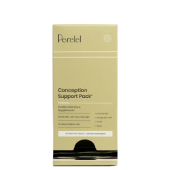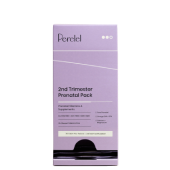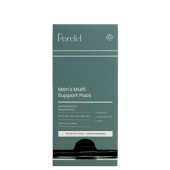As your bump continues to grow and your body changes and adjusts throughout your pregnancy, you may experience some aches and pains. And while they certainly can be alarming and less than enjoyable, they’re most likely not a cause for concern. “It’s normal to experience mild cramps at the beginning of pregnancy,” acknowledges Dr. Banafsheh Bayati, M.D., a board-certified OB/GYN in Los Angeles, California. “Pregnancy brings about many changes in the body. And for each woman, these changes are unique. In general, the rise in the hormones progesterone and relaxin brings about an increased laxity to the body that allows for changes to take place. A pregnant mom may feel more limber and flexible at this time. You may notice this when you exercise, like in a yoga class for example. But as the growth occurs, the changes in one's center of gravity and the pressure begins to take a toll. You may feel this on your hips, pelvis, and lower extremities.” While no two pregnancies are alike, Bayati is helping us break down common aches and pains you may experience and how to deal.
Round Ligament Pain
That laxity Bayati is talking about may be felt in your round ligaments, which support the uterus by connecting to the groin region. Throughout pregnancy, the ligaments become softer and may stretch, which may cause pain due to the tightening or spasm of the ligaments.1
“Round ligament pains along the groins are common in the second trimester. It's important to address aches and pains with your obstetrician so they can evaluate and make sure they are normal changes of pregnancy occurring as the womb grows and the ligaments stretch.”
Lightning Crotch
As you get closer to the finish line, you may experience lightning crotch pains. “Lightning crotch sensations can be described as sharp, shooting discomfort in the vaginal area that presents late in the third trimester,” explains Bayati. “It’s associated with the pregnancy waddle. It is a common experience during the last few weeks of pregnancy as the growing baby’s head moves lower into the pelvis.”
Braxton Hicks Contractions
Just to keep you on your toes, Braxton Hicks contractions can be confused for labor contractions but they’re actually a normal cramp that is different from labor contractions in that they are not regular or painful and do not get closer with time.2
“In the third trimester, Braxton Hicks contractions may be noted by some. Women may complain of firmness in their belly, stretching in the belly, or feel like the baby is balling up or pushing out. These are typically due to Braxton Hicks contractions. It is a more common complaint in a second or third pregnancy. These are normal but again best to mention when you experience them with your obstetrician.”
How to Manage Your Aches and Pains
“It's important to track your weight gain and stay active. It's very helpful to exercise and stretch, prenatal yoga is my favorite, have adequate sleep, and Epsom salt baths can be very relieving. I also recommend treating yourself to a massage, acupuncture, physical therapy, or a trusted chiropractor who specializes in obstetrics,” says Bayati. “The body will adjust for the growing baby, but being aware of these additional stressors to the body will help you have a more comfortable pregnancy.”
It’s also important to note any increased pressure in the pelvis or vaginal area and share any changes that came with it with your healthcare practitioner. “If there are any changes to the vaginal discharge, leaking of fluid, or bleeding that is associated with cramps or pressure, they can signal preterm labor, which always needs to be addressed. Your obstetrician will help you determine if you are at an increased risk.”
Are you experiencing any aches and pains? Share your story by joining the Perelel community on social or by subscribing to our newsletter.
1 What causes round ligament pain during pregnancy?
2 Braxton Hicks contractions | American pregnancy association. Americanpregnancy.org.
This article is for informational purposes only. It is not, nor is it intended to be, a substitute for professional medical advice, diagnosis, or treatment and we recommend that you always consult with your healthcare provider. To the extent that this article features the advice of physicians or medical practitioners, the views expressed are the views of the cited expert and do not necessarily represent the views of Perelel.





















